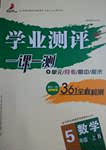题目内容
完形填空
阅读下面短文,从短文后各题所给的四个选项(A、B、C和D)中选出可以填入空白处的最佳选项,并在答题卡上将该项涂黑。
Abraham Lincoln was one of the few great men who really were great. ________ he became president, Lincoln spent twenty years as a(n) ________ lawyer – at least in financial terms. But when you ________ the good he did, he was very rich ________ .
For example, Lincoln didn’t like to ________ people much who were as poor as he was. Once a man gave him twenty-five dollars, but Lincoln ________ him back ten of it, saying he was being too ________.
Lincoln won a case for an old woman in________ poverty. He didn’t charge(收费) her for his ________ and, in fact, paid her hotel bill and gave her money to buy a ticket home!
He once ________a cheater(骗子) from gaining possession of some land ________ by a mentally ill girl. After he case, Lincoln’s assosciate(同事) came to ________ their fee, but Lincoln reprimanded(训斥) him. His associate ________ that her brother had agreed on the fee ________ , and that he was ________ satisfied.
“That may be,” said Lincoln, “but I’m not satisfied. That money comes out of the ________ of a poor, mad girl; and I would rather ________ than take it. You return half the money at least, or I’ll not take a cent of it as my ________ .”
He was a fool, perhaps, by certain standards. He didn’t have much, and it was his own ________ . But he was a good human being by anyone’s standards.
Lincoln didn’t talk much about religion. But he once said, “When I do________ , I feel good, and when I do bad, I feel bad, and that’s my religion.”
1.A.AfterB.BeforeC.DuringD.Through
2.A.unsuccesfulB.unusualC.perfectD.skilful
3.A.receiveB.lookC.praiseD.measure
4.A.tooB.thusC.indeedD.later
5.A.changeB.chargeC.askD.spare
6.A.sentB.threwC.pushedD.devoted
7.A.greedyB.selfishC.richD.generous
8.A.slightB.smallC.extremeD.average
9.A.servicesB.timeC.laborD.words
10.A.forbadeB.stoppedC.caughtD.save
11.A.wateredB.plantedC.boughtD.owned
12.A.divide upB.add upC.cut downD.figure out
13.A.believedB.doubtedC.arguedD.answered
14.A.behind timeB.ahead of timeC.in timeD.at no time
15.A.partlyB.neverC.completelyD.again
16.A.pocketB.bookC.handD.room
17.A.retireB.workC.leaveD.starve(挨饿)
18.A.fortuneB.prizeC.rentD.share
19.A.dutyB.mistakeC.faultD.regret
20.A.normalB.goodC.badD.noble
 活力课时同步练习册系列答案
活力课时同步练习册系列答案 学业测评一课一测系列答案
学业测评一课一测系列答案

